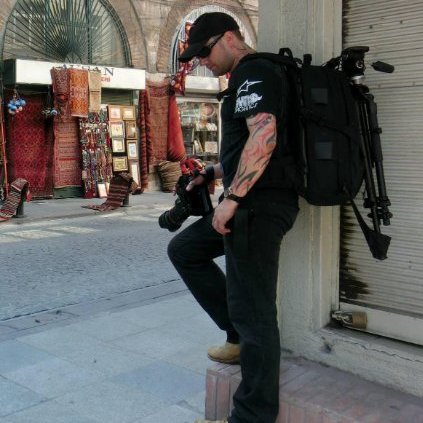ASK & DISCUSS
INDEXMultiple characters
9 years, 11 months ago - Rickardo Beckles-Burrowes
How have you introduced multiple characters in a scene?
Only members can post or respond to topics. LOGIN
Not a member of SP? JOIN or FIND OUT MORE
9 years, 11 months ago - Dan Selakovich
Hey, Rickardo. There is one compliment I get the most about the way I write a screenplay from studio readers of all people: "It read like a novel. I really enjoyed that over other screenplays." Now do I think my stuff reads like a novel? Hell no. But I try to make the visual description interesting.
In other words, the very thing script gurus tell you NOT to do, is what gets my stuff favorable marks. So how does a novel introduce many characters in a scene? Usually by an action they do. This also gives you an opportunity to build on a character's physicality while introducing them at the same time. I'll even put thoughts of characters in if it helps the reader imagine them. Instead of saying JACK is 5' 8" and 350 pounds. I might say something like "...Jack also wondered how the roof held his tremendous weight." Not a great example, but you get my point.
9 years, 11 months ago - Rickardo Beckles-Burrowes
Thanks Dan.
That's really helpful as I've had the same challenge between what I've read (script writing books / my degree texts) with what script readers and the scrip consultant I've worked with recently have asked for r.e. introducing multiple characters. It's an odd dichotomy.
9 years, 11 months ago - Charles Harris
Hi Rickardo
Thank you for starting a fascinating discussion. Your question is actually two questions.
1. What's the best format?
My rule for description is only write what's dramatically relevant at the time. In other words, what's the audience thinking.
The chances are that we are aware of the group of characters but don't focus on them individually until they are relevant. So, either briefly list them as Dan does, or if that gets cumbersome you can even reduce them as appropriate, eg: "Ahmed is talking to friends." Then you can bring them in one by one, as needed.
Of course, if we don't know some people are there, you can always introduce them as a surprise later.
2. What's the best introduction?
That's a subtly different question. I agree with what just about everyone has said. Always get straight into action - an action that helps bring out the character.
However, when you have a large group you have an additional problem that your reader/audience may get confused, so you have an extra need to ensure that they are all very distinct. Give them very different names, nicknames, types, etc, to make them stand out and ensure that the action is also very distinctive.
So, for example, have Aisha yelling at Jane, as PJ lounges thoughtfully by the piano and Fishface pretends not to care while continually bouncing a ball against the door.
I'd also say, read as many scripts as you can lay your hands on/download - good and bad.
Have fun
Charles
9 years, 11 months ago - Nick Goundry
You open a scene by describing the location and saying which characters are present. Characters then leave or arrive over the course of the scene, depending on the demands of your story.
The argument seems to be how much detail you provide about each character when they're first introduced. Initially, it's just their appearance, because that's the visual - what the audience is seeing. You then reveal who they are through their actions.
Best not to offer a lengthy description in the script about who a character is, because it's not visual. The audience doesn't read the script as they watch the film.
9 years, 11 months ago - Allan (Mac) McKenna
Isn't the basic principle guys, regardless of the art form, 'empathy'? Get inside the heads of the people you're aiming at. Easier said than done of course.
9 years, 11 months ago - Marlom Tander
@Rickardo Beckles-Burrowes
Not sure what you mean by that - surely the story dictates how the characters flow into it? If you're trying to second guess that, then you should start by assuming that you're breaking flow. You MIGHT need to break flow, but be sure that you do, before you do it.
A while back I was asked to fix a script. The script started with two guys talking as they walked to a music shop, where they then talked to a couple of girls. The talk was all them talking to each other about the other chracters because the writer wanted to introduce all the characters gradually.
I knocked it down to describing how the guy walked, two looks and one line, by which time the audience knew who the lead was, that he was a dancer, a chancer, likeable, had history with one of the girls and that his mate was dating the other. Meanwhile the conversation I put in was about serving the plot.
When I write I always like to assume that actors can act :-)
9 years, 11 months ago - L. Sabia-Byrne
Hey Rickardo,
Ill back Dan up here and say that character business is vital for introducing new characters into a scene. You can't just have them standing around waiting to deliver their lines BUT an addition to this is what you do as a Director.
Ideally a new character would be introduced as a camera moves from its first keyframe to its final keyframe (this is called a Hand Off) which creates a seamless introduction, or you could do it on a cut (editors cut) if you had a dramatic entrance in mind, or a character could join a camera move mid move (a Pickup) and stuff like this.
Essentially the point is that there shouldn't be any unmotivated coincidence when you introduce a character. They have to have a reason for being there, by which I mean, they have their own business that they are already doing AND they are seamlessly integrated into your blocking.
Hope that helps a bit mate.
Lee
9 years, 11 months ago - Rickardo Beckles-Burrowes
I was talking specifically about screenwriting formatting for introducing multiple characters into a scene, but your comment is helpful regardless ;-)
9 years, 11 months ago - Rickardo Beckles-Burrowes
Hey Marlom,
Thanks for your comment. Thus far, I've opted for a similar tact at the start of the scene or slugline but wondered if you or else add in all of the characters in one go?
9 years, 11 months ago - Rickardo Beckles-Burrowes
Thanks for your comment Ed, I'll check out the script for GOODFELLAS.
9 years, 11 months ago - L. Sabia-Byrne
I think I should probably have read all this a bit closer really shouldn't I? You were just asking about scriptwriting right? Doh!
9 years, 11 months ago - Marlom Tander
What works best is simply dropping in while they are in the middle of something that reflects the dynamic between them and let the audience work it out.
9 years, 11 months ago - Dan Selakovich
I think in the end, as long as you don't stop the story to introduce a character, you'll be fine. Or keep it really short: "Jack, Sally, Trisha, and Jim were sitting at the kitchen table, panicked about the events of last night." We know who's there, and we know their emotional state. That's enough.
9 years, 11 months ago - Ed Griffiths
Hi Rickardo,
If you introduce a group of characters in a single scene, Martin Scorsese's excellent GOODFELLAS is worth studying. In early scenes some key characters are shown in a gambling den, an accustomed haunt with a voiceover by the main character of the film describing them, which sets the tone of those characters being criminals and closely associated. This is repeated a few times over the course of the film for other characters as the years progress. In THE LEAGUE OF GENTLEMEN (1960), Jack Hawkins as Hyde the gang leader invites all the future members of his gang to a dinner party in a private room at a pub and narrates all their various money problems and criminal records as a way of introducing everybody. That's how the gang is recruited and kicks off the film thematically from the beginning as a conspiracy. It's very effective. There needs to be a strong reason for all the characters introduced to be in that introductory scene. Either they're already hooked up or they're about to be; and everybody has a definite motive that's made clear before the end of the scene, either by them being honest or letting their reason(s) slip or it being communicated in some other way.







